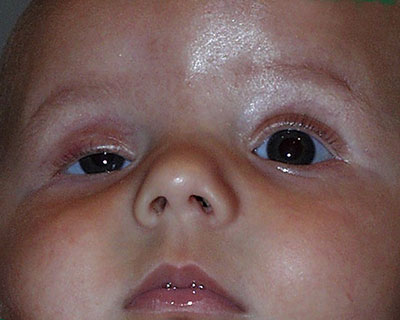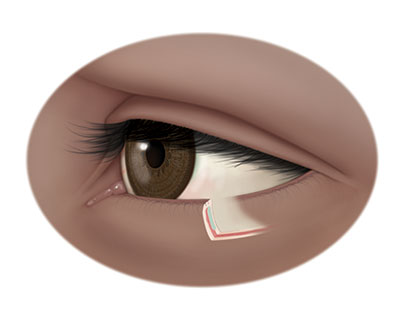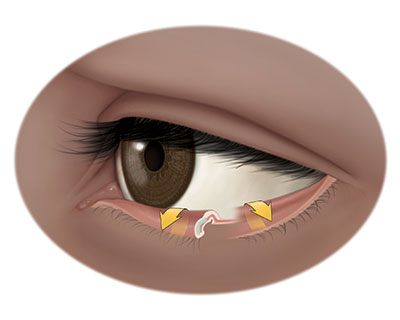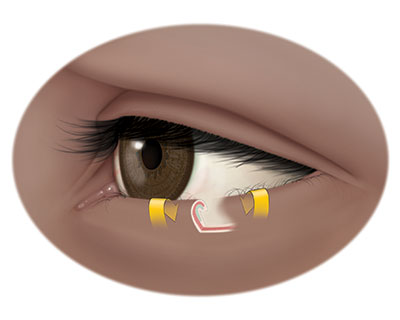Having an eyelid problem can be painful, limit your vision and affect your appearance. Many people have eyelid problems. They may include droopy upper eyelids (ptosis), extra eyelid skin or eyelids that turn inward or outward. Fortunately, ophthalmologists can treat many types of eyelid problems with surgery.
Ptosis correction
Ptosis is when one or both of your upper eyelids droop. It can limit your peripheral (side) or central (straight ahead) vision. If you have ptosis in one eye only, your face may look uneven. If both eyelids droop, you can look tired.
Someone can be born with ptosis. In this case, a child may lift their eyebrows or tilt their head back to be able to see. Ptosis can seriously limit the development of sharp vision. When a child’s eyelids are droopy or incorrectly shaped, both eyes usually do not focus evenly. They may need eyeglasses to see clearly.

After a complete eye exam, the child’s ophthalmologist may recommend surgery to fix the eyelid. This surgery is usually done during the preschool years (ages 3 to 5).
Ptosis can also develop later in adult life. It sometimes begins after having other types of eye surgery or eyelid swelling.
With ptosis surgery, the ophthalmologist strengthens the eyelid muscle by shortening it. This helps lift the droopy lid, improving vision as well as the eye’s appearance.
Blepharoplasty to remove excess eyelid skin
Your eyelid skin is very thin and tends to stretch over time. Sometimes it stretches too much, causing excess eyelid skin. When this happens to the upper eyelid, it can limit your side vision. When lower eyelid skin stretches, you may have what some people call “bags” under the eyes.
Ophthalmologists can remove excess eyelid skin in a procedure called blepharoplasty. At the same time, the surgeon may also remove extra fatty tissue near the eyelid or tighten muscles and tissue. This surgery helps make the area around the eye and lid look more clearly defined. It also makes eyes appear less tired and more alert.
Ectropion/entropion repair
When the lower eyelid droops down and turns outward, it is called ectropion. This can happen due to age, skin disease, a tumor, trauma, or a burn to the eyelid. Ectropion can make your eyes dry, watery and sensitive to light and wind.
If the lower eyelid turns in toward the eyeball it is called entropion. This condition can develop due to age, infection, or scarring inside the eyelid. When the eyelid turns inward, your eyelashes and skin may rub against the eye. This can make your eye red, watery and very irritated. If it is not treated, entropion may also lead to an infection on your cornea (the clear dome-shaped window at the front of the eye).
Surgery for ectropion and entropion returns the eyelid to its normal position. This helps reduce painful and irritating symptoms and protects your eye.
Normal eyelid

Ectropion

Entropion

In these drawings, the eyelid is cut away to show the appearance of a normal eyelid (top) and an eyelid turning outward (middle) and inward (bottom).
What to expect from eyelid surgery
Nearly all eyelid surgery is done as an outpatient procedure. A local anesthesia will be used to numb your eye and the area around it.
Before surgery, your ophthalmologist will do a complete eye exam and talk with you about treatment options. He or she may also take photos of your eyes and test your side vision.
Eyelid surgery tips
Before eyelid surgery, be sure to tell your ophthalmologist about all the medicines you take. Include all prescription and over-the-counter medications, vitamins, and supplements. It is important for your eye surgeon to know if you take aspirin (or aspirin-containing drugs) or blood thinners, or if you have a bleeding problem.
As with any type of surgery, there are possible risks and complications with eyelid surgery. Your ophthalmologist will discuss these with you.